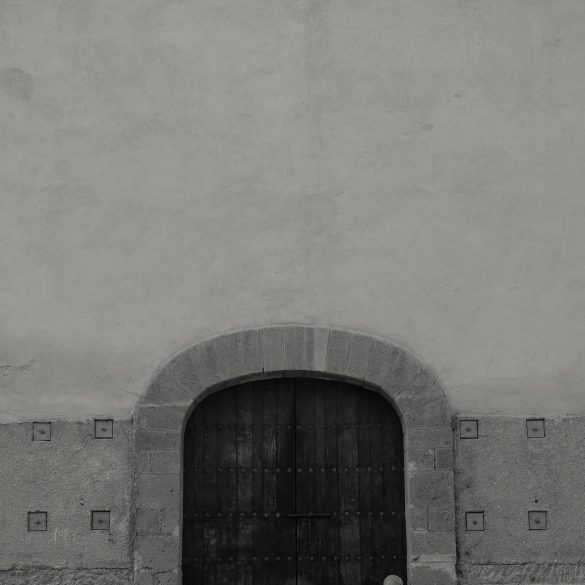Sugarman and South Africa: The Unlikely Revolution That Changed Music Forever
Let me take you back to the first time I put on a scratchy vinyl of “Cold Fact.” The air in my flat was thick with that unmistakable vinyl warmth, the South African winter creeping through cracks in the window frame. It’s almost cliché to say, but “Sugar Man” felt more like a transmission than a song—a coded message from some distant, luminous past. And here’s the thing that always gets me: These haunting folk rhythms, penned by an obscure Detroit singer named Rodriguez, became the soundtrack of the entire South African anti-apartheid youth culture decades before the world “rediscovered” him1.
I’m not alone in this. Anyone who’s spent time in Cape Town bars or heard late-night vinyl spins in Johannesburg has a “Sugar Man moment.” Yet, remarkably, almost nobody outside South Africa had a clue about this legend until “Searching for Sugar Man” broke the story open globally. Why did Rodriguez mean so much to a nation under oppression? Why was his music banned yet so beloved? How did a misunderstood American folk singer become a South African cultural icon—and what does his story reveal about our tangled relationship with art, memory, and social justice?
This isn’t just about music. It’s a tale of political resistance, forbidden records, improbable myths, and the strange way a simple ballad circled the globe to inspire revolution in a place the songwriter had never even seen. For me, this is personal—and for millions of South Africans, it’s cultural DNA.
Who Is “Sugar Man”? The Detroit Origins
Let’s peel back the myth for a second. Sixto Rodriguez was born in Detroit to Mexican immigrant parents in 1942—a fact that’s endlessly fascinating because Detroit’s urban grit and Latin heritage colored every track he ever recorded. He scraped by as a laborer, wrote observational lyrics with a rawness Bob Dylan would envy, and put out two albums, “Cold Fact” (1970) and “Coming from Reality” (1971), before vanishing from the American music scene.
Rodriguez’s debut “Cold Fact” sold next-to-nothing in the U.S.—but, through a bizarre chain of bootlegging, would go platinum ten thousand miles away in South Africa, outselling The Rolling Stones and Elvis2.
Want a fun fact? “Sugar Man” was actually banned from South African airwaves. Yet, somehow, it still found its way to thousands of hidden gatherings, university dorms, township shebeens, and battered car stereos during apartheid’s darkest years3.
South Africa developed one of the world’s most sophisticated music censorship systems during apartheid—the Directorate of Publications—which banned over 2,000 international songs, including multiple tracks by Rodriguez4.
Bootlegs, Bans, and a Protest Soundtrack
Here’s where the story gets genuinely wild. How did Rodriguez’s counterculture anthems gain traction in a country he’d never visited, whose oppression he knew only vaguely from newsprint? During apartheid, Western music that hinted at protest or countercultural ideals—no matter how laced in poetry—was at risk of censorship or total banning5. That didn’t deter South African fans. Bootleg LPs started to circulate in early 1970s Cape Town.
By the late 1970s, “Sugar Man” was the unofficial anthem for white, liberal, urban youth—but the real twist, as I learned from a former student activist, was that Rodriguez lyrics crossed racial boundaries, inspiring Black township musicians to quietly emulate his blunt honesty and anti-establishment style.
Was it just the lyrics? Or was there some mythic resonance—this outsider’s rawness, the sense of distance and danger, the secrecy around each record—that made his music spiritual fuel for resistance? I go back and forth on this, honestly. But nearly every South African above the age of 35 will tell you: without Rodriguez, the ’70s and ’80s just wouldn’t have sounded the same.
The Myth-Making Machine: How Legends Grow
I’ll be honest—my first clue that Rodriguez had become something larger than life in South Africa came during a cross-country road trip through the Karoo years ago. An old, battered cassette labeled “Sugar Man — LIVE!?” was all a small-town petrol station attendant could talk about. The stories, by then, outnumbered the actual facts.
In the absence of internet (and with state censorship), rumors filled the gaps. No one knew Rodriguez’s real fate. Some claimed he’d died by self-immolation on stage, others said a drug overdose, a gunshot, even mafia execution. In reality, Sixto Rodriguez was working blue-collar jobs in Detroit, apparently oblivious to his own global stardom6.
Legends grow best in darkness. South Africans created their own Rodriguez mythos—what he stood for mattered more than who he really was7.
The myth had raw power. During apartheid, uncertainty, rumor, and hope merged into a kind of tribal knowledge. For many, discovering Rodriguez felt almost like a secret act of rebellion—ironically, even more potent because the actual Rodriguez was living in near-anonymity in Detroit at the time.
- Dozens of cover bands formed, each with a unique local flavor.
- Lyrics were swapped out—or subtly shifted—to dodge censorship.
- Urban legends spread via word-of-mouth, fanzines, campus newsletters.
- Two separate record labels claimed to have “the only master tape.”
Let that sink in: In the age before YouTube or Spotify, a missing Detroit singer became as much a freedom symbol as international icons like Mandela or Tutu—for a segment of South Africans, anyway. There’s something about mystery that multiplies meaning, isn’t there?
How Bootleg Records Fueled the Myth
Case in point: fake live bootlegs. Nearly every muso I met in Johannesburg claims to have heard a “Rodriguez concert tape” that was, in reality, a South African covers band. In these impromptu jam sessions—where authorities were less likely to listen in—Rodriguez records would be whispered about with the same urgency as banned books.
Actually, here’s a weird twist: Some original South African pressings (even legal ones) were manufactured in such limited runs that collectors now pay thousands of dollars for them—a rare thing in African rock history8.
Searching for Sugar Man: A Documentary Revolution
So, how did all this come to light? It took a Swedish filmmaker, Malik Bendjelloul, to stitch together the myth, the music, and the man for a global audience with 2012’s Oscar-winning “Searching for Sugar Man.” Before this film, Rodriguez’s own family didn’t know just how revered their patriarch was on another continent—all because of word-of-mouth and smuggled vinyl.
“Searching for Sugar Man” didn’t just reveal a secret legend; it set off real-world change—suddenly, Rodriguez performed sold-out South African stadium tours, gave interviews, and found late-in-life financial stability (however modest), far surpassing his U.S. recognition9.
What struck me most was watching those first comeback concerts—the crowd, ranging from grizzled activists to wide-eyed teens, singing every word. There was catharsis in those nights, not just for a rediscovered artist, but for a country grappling with its fractured past.
Common Questions—Featured Snippet Answers
- Was Rodriguez aware of his South African fame?
Not until the late 1990s; local journalists tracked him down after piecing together decades-old leads. - Why was his music banned in South Africa?
References to drugs and rebellion conflicted with apartheid-era censorship protocols targeting “subversive content.”10 - How was “Searching for Sugar Man” received in South Africa vs globally?
The film was a critical and emotional hit in South Africa—causing a Rodriguez renaissance—while intriguing international audiences unfamiliar with apartheid’s cultural history.

Cultural Impact: Rodriguez as South Africa’s Voice
It’s hard to overstate how deep Rodriguez’s music ran in South African popular culture—even compared to canonical South African musicians like Johnny Clegg or Miriam Makeba. Ever notice how some outsider voices echo more deeply in foreign lands than at home? I’m still chewing on why that is, but for many fans, Rodriguez became a proxy—his work letting ordinary people feel less alone in their struggle, disappointment, and hope11.
Rodriguez’s messages of disenfranchisement, class, and political inertia spoke directly to the “born frees”—South Africans who reached adulthood after apartheid but still felt marginalized by the prevailing social order.
- “I Wonder” became a wedding song for interracial couples post-1994—an act of cultural healing in itself.
- Cape Town graffiti artists often stencil Rodriguez lyrics beside murals of Mandela and Biko.
- The New Year’s Eve firework countdown at Durban beachfront has played “Crucify Your Mind” every year since 2012.
- Several township radio stations use Rodriguez clips in their daily news intros.
A question for you: Can an artist truly become a living symbol for a nation’s pain and renewal, or is that just the way we romanticize nostalgia? I’ve heard both arguments from South African friends—but there’s no denying the tangible cultural aftershocks his lyrics left across genres, regions, and even political movements12.
The Modern Music Scene: From Bootleg to Mainstream
I used to think that the Rodriguez phenomenon was a one-off—inexplicable, probably unrepeatable, just a weird local obsession. Actually, watching how younger generations now claim his music—not through bootlegs, but Spotify playlists and pop-up record bars around Cape Town—I’m convinced the “Sugar Man” effect continues.
- 2018: Rodriguez headlined the Cape Town Jazz Festival, outselling local hip-hop acts.
- 2019: His lyrics were cited by youth activists during the #FeesMustFall university protests.
- 2022: A South African indie label reissued “Coming from Reality,” reaching a new Gen Z fanbase.
Cape Town’s Observatory neighborhood hosts an annual “Sugar Man Street Festival,” celebrating multiculturalism, protest music, and South African food—a direct outgrowth of Rodriguez mythology in community life.
Visiting South Africa: Following the Sugarman Trail
Looking to go deeper? You can actually follow the “Sugarman Trail” across South Africa. I’ve done this journey as both cultural researcher and casual traveler, and it’s a crash course in the way music shapes place—and vice versa.
- Visit Cape Town’s famed Labia Theatre, where “Searching for Sugar Man” premiered—a ritual screening space for old fans and newcomers alike.
- Tour the District Six Museum, home to the city’s forbidden music archive and historic listening booths.
- Explore the Maboneng Precinct in Johannesburg, where indie record stores still shelve original Rodriguez bootlegs alongside new South African jazz releases.
- Attend the annual Sugar Man Street Festival—if you love both music and food, nothing else compares.
- Grab an “underground” Rodriguez playlist USB from a street vendor (they’ll know what you mean).
Seasonal tip: Cape Town’s winter (June–August) brings cozy jazz bars and late-night poetry nights ideal for immersing yourself in local Rodriguez lore, while summer street festivals offer outdoor concerts and contemporary remix battles. I recommend spending at least one rainy afternoon in a vinyl cafe debating “Cold Fact” lyrics with Capetonians just to feel the social resonance firsthand.
South Africa isn’t just a destination for wine and wildlife—its living music history, especially the Rodriguez legacy, defines neighborhood identities. Experience the connection, not just the tourist sights.13
Enduring Legacy and the Power of Music
Here’s where I step back and reconsider: Why does a forgotten Detroit musician’s influence matter so much in the age of streaming and Instagram? Because the Rodriguez saga shows us that art doesn’t just travel—it transforms. A song banned by a regime can become the soundtrack of revolution. An artist left behind in his home country can become the voice of hope for millions overseas. And myths, for all their inaccuracies, give shape to the yearning for meaning we all share14.
I used to be skeptical about the exaggerated power of music to effect social change. Having seen the afterlife of “Sugar Man” in South African culture, I’ve revised that view. Real transformation comes through the cumulative effect of small, often secret, acts—like sharing a banned album at a house party or changing a lyric to fit the needs of a new movement.
- Rodriguez’s songs continue to be cited in South African literature curricula.
- Global music festivals use the “Sugar Man model” to spotlight hidden legends.
- International advocacy groups still reference his protest lyrics in campaigns against censorship.
- Younger South Africans remix Rodriguez, blending protest folk with new city beats.
How to Add Schema Markup for This Topic
For webmasters and bloggers hoping to future-proof their own Rodriguez content, consider implementing schema markup for MusicAlbum, MusicGroup, and CreativeWorkSeries to boost SEO and rich search results. Include artist nationality, album release date, and “award-nominated” fields for maximum accuracy. Update internal links to direct to core music history, SA travel guides, and protest music playlists to strengthen topical authority.
Discover Rodriguez’s albums, dig into South African cultural history, and share your own “Sugar Man” stories—because good art, like good revolutions, needs witnesses. If you ever find yourself on Cape Town’s rainy streets, listen for those “Cold Fact” chords drifting from a side-door bar. That’s history alive.
References



